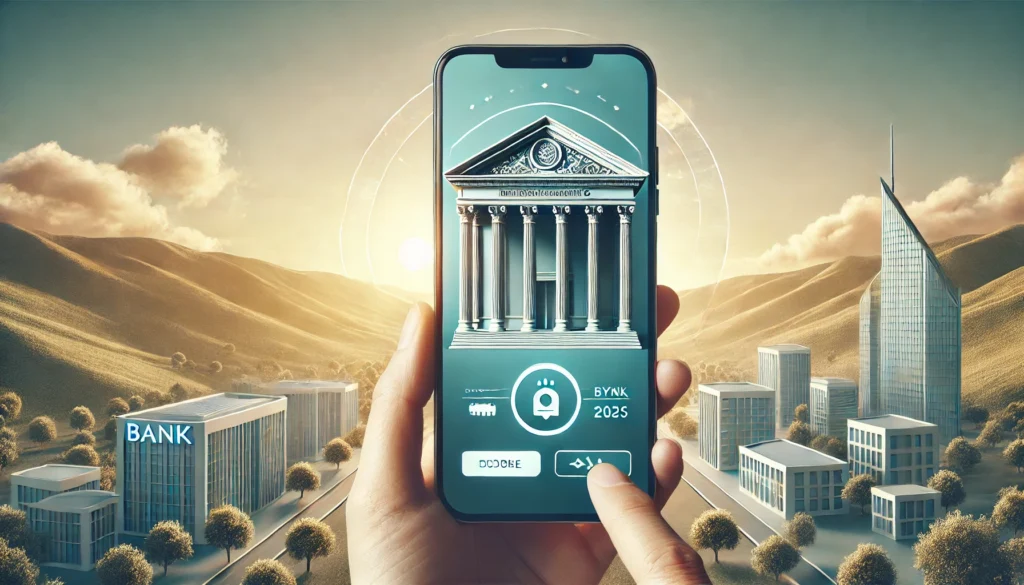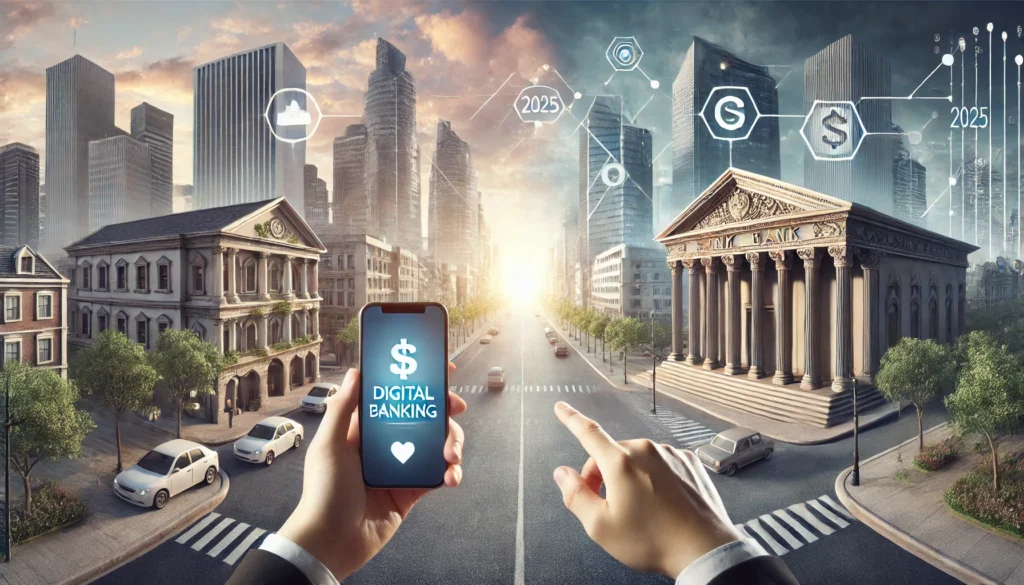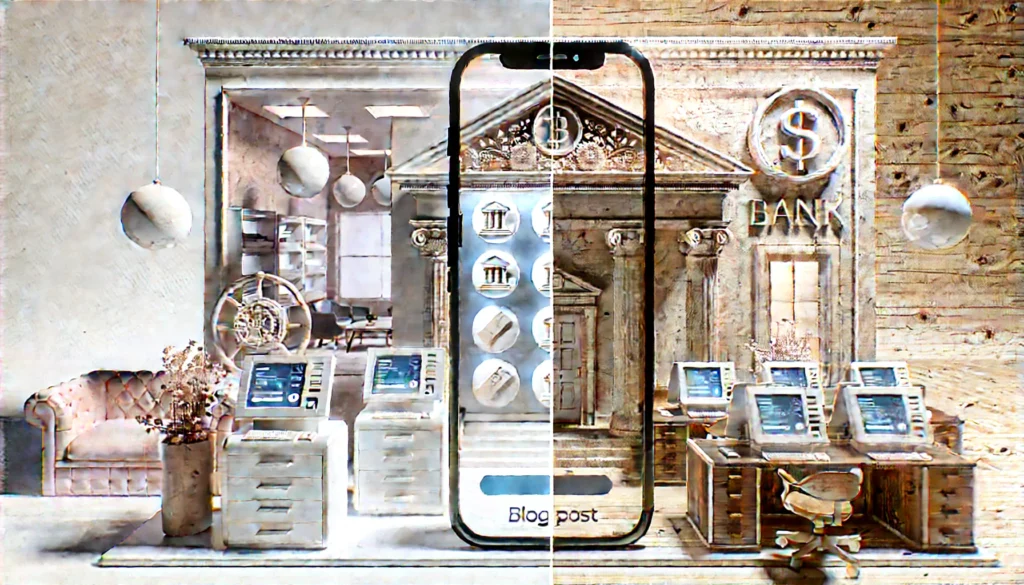In today’s rapidly evolving financial landscape, the choice between digital and traditional banks poses a pivotal decision for consumers looking towards 2025. As the digital revolution reshapes our world, the banking industry finds itself at a crossroads, with innovative technology-driven solutions challenging the long-standing norms of traditional banking institutions. Understanding the attributes and benefits of both options is essential for consumers as they navigate these changes.
Digital banks, often characterized by their tech-savvy offerings and cost-effective approaches, present a dynamic contrast to their more established, brick-and-mortar counterparts. While digital banks promise convenience and efficiency with AI-driven insights and 24/7 accessibility, traditional banks hold a legacy of trust and comprehensive services that appeal to many. However, both banking models face unique challenges, such as digital banks’ need for in-person support and traditional banks’ slower pace in embracing technological advancements.
In this article, we will delve into the distinct features of digital and traditional banks, exploring their advantages, challenges, and future trajectories. By examining customer experience innovations and security considerations, alongside the ever-important factor of ease of access, we aim to provide a clear analysis to aid consumers in making an informed choice tailored to their financial needs and lifestyles by 2025.
Key Differences Between Digital and Traditional Banks

As technology evolves, banks are changing how they serve customers. By 2025, the divide between digital and traditional banks will be even more pronounced. Digital banks operate without physical branches, offering services through mobile apps and online platforms. This approach allows them to charge lower fees and offer competitive interest rates. Traditional banks, on the other hand, maintain physical locations where customers can receive in-person services. These banks are better for those who prefer personalized advice and complex financial services. Each type of bank has unique benefits, and the right choice depends on your needs and preferences.
Definition and Characteristics of Digital Banks
Digital banks, also known as neobanks, conduct business entirely online. They use digital channels to provide their services, ensuring customers have 24/7 access. Without physical branches, digital banks reduce overhead and pass those savings to customers through lower fees and better interest rates. Their user-friendly mobile apps make banking convenient and efficient. By using advanced technology, they offer real-time transaction monitoring and personalized financial tools. These banks focus on delivering a seamless experience, making them ideal for tech-savvy customers seeking straightforward banking solutions.
Definition and Characteristics of Traditional Banks
Traditional banks are established financial institutions known for their comprehensive service offerings. With numerous branches and ATMs, they provide a full range of financial products like checking accounts, loans, and mortgages. These banks are heavily regulated to ensure the safety and security of customer deposits. While they have higher operational costs, resulting in higher fees and lower interest rates, they offer the advantage of in-person consultations. Traditional banks cater to customers seeking personal interaction and more complex financial services under one roof. Their long-standing presence and wide array of options make them a reliable choice for diverse financial needs.
Advantages of Digital Banks
Digital banks have become increasingly popular due to their convenience and innovative services. Unlike traditional banks, digital banks operate entirely online, which means no need for physical branches. This makes banking accessible anytime, anywhere through mobile apps and online platforms. Since 2019, digital banks have grown rapidly, supported by advances in technology such as cloud computing and mobile internet. By the end of 2023, there were 235 licensed digital banks globally, with over 300 offering expanded services. These banks are adept at adapting to customer needs, providing 24/7 service and personalized banking solutions. Their lower operational costs also allow for competitive fees and interest rates, enhancing their appeal.
Customizable and Connected Banking Experiences
Digital banks offer customizable and connected experiences, allowing customers to tailor their banking to suit their lives. Through the use of APIs and microservices, these banks provide a flexible platform where users can choose and arrange financial tools. This level of personalization not only improves user engagement but also fosters loyalty and customer satisfaction. As users can mix and match services to align with their goals, banks move from offering one-size-fits-all solutions to creating unique, co-designed experiences. The banking experience becomes more personal and efficient, reducing friction and enhancing the customer’s journey.
Lower Fees and Cost Efficiency
One of the most appealing aspects of digital banks is their cost efficiency and lower fees. Because digital banks operate online, they avoid the high overhead costs associated with maintaining physical branches. These savings are passed on to customers through competitive rates and reduced fees. For example, first-time borrowers might benefit from promotional interest rates. In contrast, traditional banks have higher operational expenses, often resulting in additional fees for customers. Digital banks can thus provide a cost-effective option for managing finances without the burden of extra charges.
Use of AI and Data-Driven Insights
AI plays a crucial role in the digital banking landscape, providing tailored customer experiences. Through data-driven insights and predictive analytics, financial institutions can now offer personalized services and products. By 2025, AI is expected to greatly enhance customer service, fraud detection, and risk management in banking. Chatbots and virtual assistants will offer immediate support, improving customer satisfaction. The integration of AI also reduces costs and streamlines operations, ensuring a more efficient banking process. Through real-time data analysis, digital banks can offer relevant financial advice and engage customers more effectively. AI-driven personalization is transforming banking (Forbes Advisor 2025).
Rapid Response and Real-Time Customer Service
In today’s fast-paced environment, rapid response and real-time service are essential. Digital banks utilize AI technologies, ensuring 24/7 support to meet customer expectations for immediate service. The digital transformation in banking has reshaped customer expectations, leading banks to prioritize customer-first innovations. Predictive analytics and self-service options allow digital banks to provide fast, efficient service. The seamless integration across digital and physical channels is crucial for delivering effective customer service. This proactive approach not only enhances the customer experience but also sets digital banks apart in the competitive banking sector.
Challenges Faced by Digital Banks
As we move into 2025, digital banks are gaining popularity with their innovative and convenient services. However, they face unique challenges that set them apart from traditional banks. One major challenge is establishing trust and connection with customers, partly due to their lack of physical branches. This absence can make it difficult for customers to feel secure and valued. Digital banks also struggle with keeping up with regulatory changes, such as data privacy laws and cybersecurity threats, which require constant updates and adjustments. Moreover, despite offering round-the-clock customer support, digital banks often rely on chat and phone services, which may not meet all customer needs.
Lack of In-Person Support
One significant area where digital banks face difficulty is the absence of in-person support. Digital-only banks do not have physical branches, meaning customers cannot engage in face-to-face interactions with bank staff. This can limit personalized assistance, as all communication happens over the phone or online. In contrast, traditional banks offer personal relationships that help when resolving financial issues or negotiating account terms. Additionally, some transactions, like depositing cash, can be more complicated without a physical branch. Brick-and-mortar banks also provide direct problem-solving for complex banking needs, which can be missing in online banks.
Learning Curve for Some Customers
While digital banks offer undeniable convenience, some customers may need to navigate a learning curve. The ease of conducting financial transactions anytime via apps and websites may require an adjustment period for those unfamiliar with these digital interfaces. With banking operations shifting towards mobile-first communication, customers need to adapt to using mobile devices more often. As digital banks embrace Artificial Intelligence for handling routine inquiries, there’s an expectation for customers to learn how to interact with chatbots and AI-driven solutions. The digital transformation in banking, including technologies like blockchain, introduces complex concepts, which may take time for some customers to fully understand and utilize.
Advantages of Traditional Banks

In 2025, traditional banks remain a cornerstone of the financial industry. They blend historical trust with modern technology to offer a balanced banking experience. Customers continue to value their extensive networks and the ability to engage in face-to-face interactions. Traditional banks are not just financial institutions; they are pillars of community engagement. Through local branches, they provide direct contact with financial advisors, fostering trust and long-standing relationships. As they adapt to the digital age, traditional banks integrate new technologies without losing the personal touch. This allows them to offer both digital services and in-person consultation, which appeals to a diverse customer base.
Established Infrastructure and Trust
Traditional banks boast a rich history and well-established infrastructure. Their networks of branches and ATMs ensure accessibility and convenience. These physical branches are crucial for customers who prefer in-person service. Government regulation further secures deposits and adds a layer of trust. The wide range of financial products, from savings accounts to mortgages, showcases their comprehensive capabilities. This longstanding market presence instills confidence among customers regarding their stability and reliability. Even as digital banks rise, the value of face-to-face interactions in complex financial dealings cannot be overstated. This personal approach is central to maintaining customer trust and loyalty.
Comprehensive Range of Services
The scope of services offered by traditional banks is vast and versatile. They cover essential financial products like savings and checking accounts, loans, mortgages, and investment options. With digital banking enhancing service flexibility, traditional banks now offer enhanced features. This results in greater efficiency and accessibility for customers. The rise of hybrid models shows how traditional banks are not confined to old methods. They leverage digital tools, such as mobile apps, to elevate customer experiences. Artificial intelligence is also utilized to process transactions and offer personalized advice. By merging technology with traditional expertise, banks ensure comprehensive service delivery.
Familiar and Reliable Customer Support
Traditional banks continue to provide a personal touch that many customers value. In-person interaction allows customers to feel connected and understood. Relationships built with staff at local branches enhance trust and provide more tailored financial advice. While digital banks offer efficiency, traditional banks excel in personalized service. They address complex banking needs with attention and care. Customer service quality can vary, but the overall personal interaction remains a distinct strength. This face-to-face support is often sought after for substantial financial decisions, including loan negotiations or wealth management. Thus, traditional banks maintain their reputation for reliability and customer care.
Challenges Faced by Traditional Banks
Traditional banks find themselves at a crossroads in 2025. They are battling against outdated infrastructure and the fast-paced rise of digital technologies. Providing quick, seamless service is more important than ever. Yet, many traditional banks still rely on physical branches and cumbersome processes. These challenges make it tough to keep up with the convenience offered by digital banks and online-only alternatives. Modernizing legacy systems becomes crucial to keep pace with customer expectations. This is important for integrating technologies like artificial intelligence and real-time analytics into their financial services.
Slow Adaptation to Digital Innovation
Adapting to digital innovation can be a struggle for traditional banks. They have legacy systems that are not easy to update. Bureaucratic processes and physical infrastructure further slow down the adoption of modern trends. Financial institutions face complex regulations, which add to the challenges in digital transformation. Some customers remain skeptical about digital banking options, causing delays in adoption. Furthermore, the cost of digital transformation projects can be high. These factors collectively impede traditional banks’ ability to keep up with the fast pace of digital innovation.
Competitive Pressures from Fintechs
Fintechs are reshaping the financial landscape with their agility and specialization. They are offering solutions like mobile payments and investment management that disrupt traditional banking models. This innovation is often rapid, bringing new tools that simplify financial transactions. Fintechs also collaborate with banks, integrating their services into broader offerings. This collaboration places pressure on traditional banks to modernize. Banks must adopt more technology-driven approaches to remain competitive. The streamlined, customer-focused solutions of fintechs continue to inspire traditional banks to rethink their services and strategies.
Customer Experience Innovations
By 2025, the banking industry is set to offer more innovative and tailored customer experiences. Both digital and traditional banks aim to create dynamic ecosystems that cater to individual needs. These changes are not just about using advanced technologies but about integrating them into each customer’s life. Banks plan to deliver seamless, omnichannel interactions that allow customers to experience consistent service across all devices. This blend will bridge the gap between traditional banks and their digital-only counterparts, offering a balanced approach to customer satisfaction.
Hyper-Personalized Services
Hyper-personalized services are at the front of this evolution. These services use artificial intelligence and data insights to offer financial advice that suits individual preferences. Digital banks are leveraging these insights to shift from generic financial products to personalized, actionable recommendations. This helps in building stronger relationships with customers. By predicting customer needs, banks can deliver meaningful content that resonates on a personal level, leading to higher satisfaction and increased loyalty. Such innovations in financial services are not just about engaging customers, but also about creating lasting emotional connections.
Seamless Interaction Without Physical Constraints
With the rise of digital channels, customer interactions are becoming more fluid and conversational. By 2025, digital banks aim to integrate financial services into everyday activities, freeing customers from the need for physical branches. Open-source technologies and APIs make this possible, ensuring smooth data flow and interaction. As a result, customers gain access to consultations and financial check-ups from the comfort of their homes. These digital experiences help provide services whenever and wherever they are needed, enhancing customer convenience without the need for face-to-face meetings. Digital banking promises a future where financial transactions are effortless and designed around the customer’s lifestyle.
Security and Protection
In today’s banking landscape, security is a top priority for both digital and traditional banks. Both types of financial institutions invest heavily in advanced technologies to protect customer funds and identities. Encryption technologies and other cybersecurity measures are standard across the industry. Furthermore, the Federal Deposit Insurance Corporation (FDIC ) insurance covers up to $250,000 per account (official guidelines) at both traditional and digital banks. This creates a safety net for customers, fostering trust in banking services. As both sectors innovate, they continuously refine their strategies to tackle the vulnerabilities that new technologies might introduce.
Advanced Security Features in Digital Banking
Digital banks are at the forefront of using cutting-edge technology to enhance customer security. They typically employ advanced security features like two-factor authentication and biometric logins. These methods add multiple layers of protection to customer accounts, making unauthorized access difficult. Real-time fraud alerts keep customers informed instantly, allowing them to take immediate action against suspicious activity. Artificial intelligence further bolsters security by monitoring transactions in real time and detecting anomalies. If digital banks are entirely online, they compensate for the absence of physical branches with robust cybersecurity efforts, ensuring customer information is safe and secure from threats.
Traditional Banks’ Approach to Security
Traditional banks are often seen as reliable due to their established reputations and histories. Many customers take comfort in the physical presence of branches, which allows for direct interaction with bank personnel. This face-to-face engagement enhances the trust and reliability customers place in these institutions. Like their digital counterparts, traditional banks prioritize customer safety. They invest in cutting-edge technologies for protecting debit and credit card transactions, maintaining high security standards. Additionally, traditional banks benefit from FDIC insurance, which guarantees deposit accounts up to $250,000. This protection further reassures customers that their investments are secure. Overall, traditional banks combine advanced security protocols with the added reassurance of physical interactions to foster a strong sense of safety and trust.
Ease of Access and Convenience

In the world of banking, accessibility and convenience are key. As technology reshapes the industry, digital banks and traditional banks present different strengths. Digital banks excel in offering round-the-clock services. Customers can manage their finances anytime through apps and websites. This eliminates the need for physical visits, resulting in faster services with fewer fees. On the other hand, traditional banks provide direct interaction through their branch networks. This allows for personal communication and problem-solving, particularly valuable for complex transactions.
24/7 Accessibility of Digital Banks
Digital banks lead in convenience with their 24/7 availability. Through online channels, they allow users to perform transactions whenever needed. This flexibility suits today’s fast-paced lifestyle, breaking free from traditional banking hours. Mobile apps and online platforms enhance this accessibility. Customers use these technologies on various devices to manage their accounts at any moment. Without the need for physical branches, digital banks present a seamless experience. Everything from account management to loan applications happens without stepping outside, fitting brilliantly in a digital world.
In-Person Access in Traditional Banks
Traditional banks stand out with their in-person services. With a network of branches and ATMs, they foster direct relationships between customers and bank staff. This face-to-face setup offers tailored financial advice and personalized services, enhancing customer satisfaction. Visiting a branch allows deeper discussions on complex financial matters, strengthening trust and confidence in the bank. The physical presence of these branches creates a stable and secure environment. For individuals who prefer the assurance of human interaction, traditional banks provide a comforting choice.
Financial Needs and Lifestyle Alignment
As we move toward 2025, aligning financial services with personal values becomes more critical than ever. Traditional banks and digital banks both have ways to meet customer needs while considering social and environmental factors. Many consumers now prefer Environmental, Social, and Governance (ESG) practices, pushing banks to become more responsible in their operations. ESG practices are driving customer loyalty (CFPB resource). This transformation helps banks become purpose-driven, which can boost customer loyalty. Digital banks excel with their use of data analytics and artificial intelligence to personalize offerings, making them attractive to tech-savvy individuals. They also embed financial services into non-financial platforms. This integration helps them reach new audiences and offer solutions that fit diverse lifestyles. With digital banks providing 24/7 access through mobile channels, consumers gain real-time transaction capabilities, which can be a game-changer for those seeking convenience.
Catering to Tech-Savvy Customers
Tech-savvy consumers want quick and efficient banking solutions. Digital banks cater to these needs through 24/7 availability and user-friendly mobile apps. These banks offer real-time notifications, making it easy to track spending and manage accounts. Setting up an account is quick, thanks to biometric logins and instant verification processes. They are a great choice if you need flexible and accessible banking services.
Digital banks often provide competitive financial perks, such as higher interest rates on savings accounts and better rewards on credit cards. This attracts individuals looking for ways to make the most out of their finances. With the added benefit of analytics and AI, digital banks offer personalized insights and budgeting tools. These tools help you manage your money more effectively, adding convenience to financial tracking.
Continual advancements in online banking technologies enhance user experience. Mobile apps and online payment systems ensure that all transactions are seamless and fast. AI provides intuitive interfaces that mimic human interactions, making banking simple and even enjoyable. For tech-oriented clients looking for smooth onboarding and customized services, digital banks stand out as a leading choice in modern financial solutions.
For more info on the world of digital banking go check out our post on Neobanks vs. Traditional Banks: Which One is Better for you in 2025



